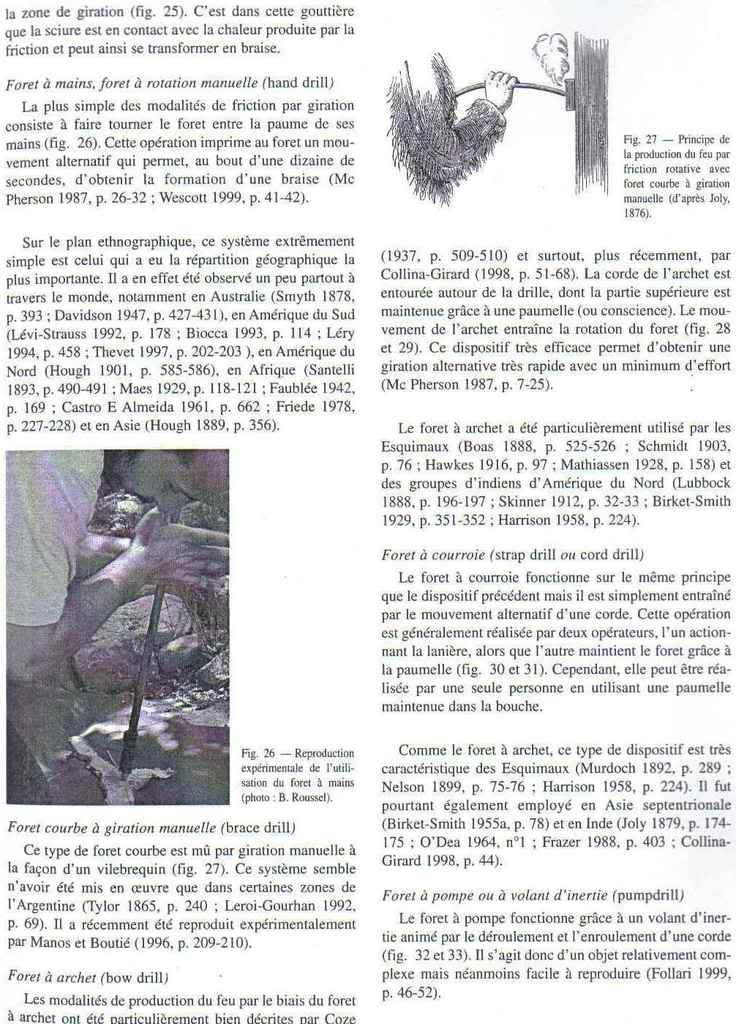In my quest for data on the bamboo-spark method (see http://www.bushcraftuk.com/community/showthread.php?t=10517&highlight=papua) and other relatively unknown, unusual & exotic ways of obtaining fire I found the following:
The Gaucho of the Pampas takes "an elastic stick about 18 in. long, presses one end to his breast and the other in a hole in a piece of wood, and then rapidly turns the curved part like a carpenter's centre-bit."
from:
http://www.1911encyclopedia.org/Fire
Can anyone provide some more information about this form of fire-by-friction? (Confirming if it is true would be a nice start)
To me it sounds like a very slow form of harakiri so I hope they used something like a bearing block to protect the chest. It can also imagine that it must be very hard on the hand that is used to turn the stick.
Tom
The Gaucho of the Pampas takes "an elastic stick about 18 in. long, presses one end to his breast and the other in a hole in a piece of wood, and then rapidly turns the curved part like a carpenter's centre-bit."
from:
http://www.1911encyclopedia.org/Fire
Can anyone provide some more information about this form of fire-by-friction? (Confirming if it is true would be a nice start)
To me it sounds like a very slow form of harakiri so I hope they used something like a bearing block to protect the chest. It can also imagine that it must be very hard on the hand that is used to turn the stick.
Tom



